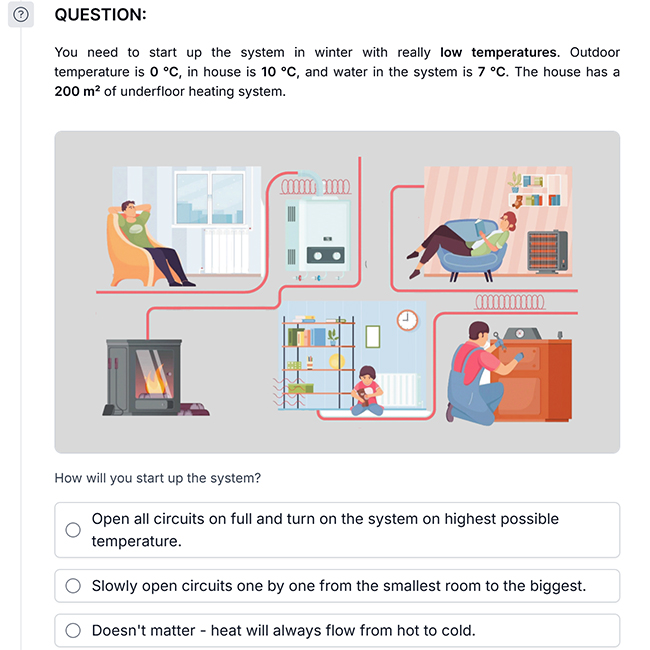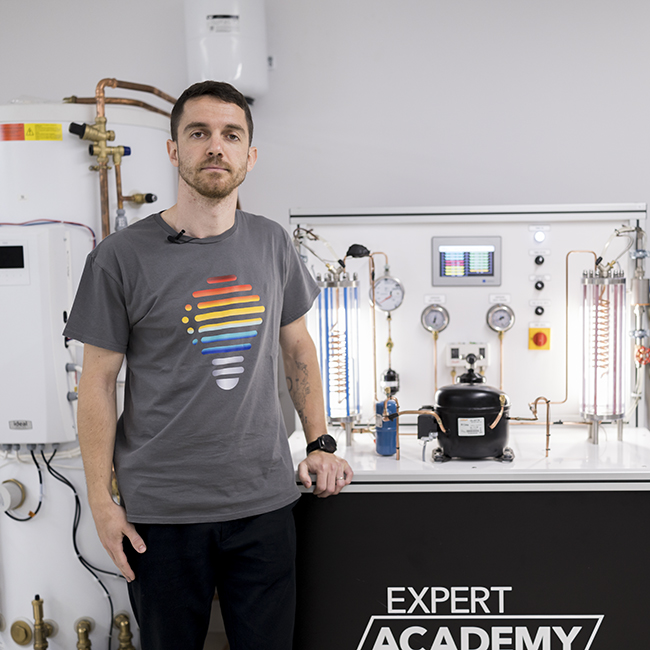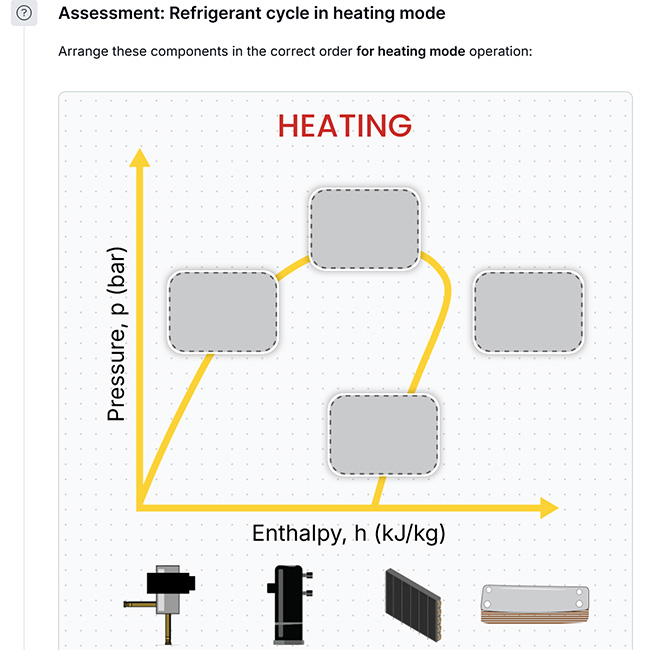MARIO DODIĆ – THE MIND BEHIND HVAC EDUCATION HUB
2025-11-25
The journey from product expert to system strategist
With a master’s degree in mechanical engineering from Zagreb and experience in technical support at industry giants like Ariston and Panasonic, Mario developed a deep understanding of the complex heating system triangle—from hydronics to control. His crucial insight—that 99% of issues are not caused by the heat pump unit itself, but by system design and installation—was the catalyst for launching his educational initiative. Through short, interactive modules and practical examples, his mission is to give installers the knowledge they need to succeed, regardless of whether they are new to the trade or long-time veterans.
ESBE is thrilled to know Mario and collaborate with him. We are deeply inspired by his clear vision for the industry, and it is our pleasure to feature him as one of the inspirers in our exclusive series, "You Inspire ESBE."
The Power of Practical Learning
Mario’s platform is built around practical, interactive, and microlearning modules. Installers have responded very positively to this approach. The short, focused modules—typically lasting just 5 to 10 minutes each—make learning engaging and easy to digest, allowing engineers and technicians to absorb concepts quickly and apply them immediately on the job during real installations. The combination of interactive assessments, real-life scenarios, and mobile accessibility creates a flexible, game-like experience.


Do you see a clear difference in knowledge retention and practical application compared to conventional methods?
“Absolutely. There is a significant improvement in both knowledge retention and practical application compared to traditional, lecture-based training. Research shows that active participation through teaching and doing results in up to 90% retention, while passive listening yields only about 5%. Installers trained with interactive modules are better prepared for on-site diagnostics and troubleshooting and reach proficiency more quickly,” says Mario.
How do you plan to overcome hurdles such as the shortage of qualified trainers and strategic partners?
Mario tells us, “We focus on three main areas: 1) Digital and microlearning modules to reduce reliance on in-person trainers. 2) Partnerships with manufacturers and industry groups to co-develop content and sponsor technician training. 3) The use of data analytics to identify learning gaps and update content promptly.
The platform emphasizes measurability and performance tracking for corporate clients. For group training, they use facilitators for real-time performance tracking, allowing instructors to proactively support team members who struggle with specific topics.”
Can you provide concrete examples of how your training has led to fewer on-site problems or increased efficiency for your partners?
“Certainly. Many partners have been able to design and install systems with fewer components and lower upfront costs, thus improving overall efficiency. For instance, one client saved €4,000 by optimizing system design and removing unnecessary expenses. It is better to invest those savings in quality of life than in unnecessary heating system costs,” says Mario.
The perfect installation
Mario highlights the crucial system triangle of design, installation, and control. When describing a perfect heat pump installation, he stresses that simplicity is key. Achieving this simplicity requires extensive knowledge—simplifying is the hardest aspect. The goal is simply to move water efficiently from the heat pump to the radiator. If you imagine it as a straight road versus one with traffic jams and roadblocks, the straight road is faster, more efficient, and less stressful. Simple pipework yields a more efficient, cost-effective system.



What is the most critical step in that process, and what role does the correct choice of components, like valves, play in achieving excellence?
“Understanding thermodynamics and the underlying science is key. With that knowledge, installers can choose components wisely. For example, a valve with four times the pressure drop compared to another, results in more complex, expensive system with lower efficiency,” says Mario.
Cooperation for efficiency
Perspective High-quality components are crucial for optimal system performance, and Mario sees a strong alignment between his teaching principles and products like those from ESBE. ESBE’s valves, for example, are a small but mighty investment.
How do your teaching principles align with ESBE’s products, specifically regarding efficient and high-quality installations?
“ESBE’s valves align very well with the principles taught at the HVAC Education Hub, especially regarding efficiency and reliability. The valve is often the simplest component in a system worth €10,000, so investing €50–100 in a better valve with a lower pressure drop is wise.
This can save up to €1,000 by avoiding the need for a secondary pump, hydraulic separation, and a less efficient system. Thus, it’s an investment with an instant payback period. To demonstrate the importance of these choices, products are integrated into the training through interactive, scenario-based learning. For instance, learners complete an exercise to calculate installation pressure drop and then must choose the appropriate valve based on the required flow rate.
A new hydronics course is in development that will use drag-and-drop assessments to visualize these products in action,” Mario explains.
As a leading voice in HVAC education, how do you view the role of manufacturers like ESBE in helping to close the knowledge gap among installers?
“Manufacturers like ESBE play a key role by providing robust, user-friendly modular components and supporting digital training initiatives that help close the installer knowledge gap. Scaling is possible only with manufacturers’ support, as they are often the strongest market players,” Mario concludes.
The Future
There is a huge need to train a new generation of HVAC professionals, and the HVAC Education Hub has significant plans to scale across Europe and internationally, including attending the Installer SHOW in New York (March 2026). The platform is structured for global access and is working towards international accreditation.

Mario's vision is clear: To take the platform to every corner of the world and set a new standard for HVAC education. He emphasizes that education is the key to personal success. We are inspired by his dedication and look forward to following how he transforms the industry globally. Thank you for letting us get to know you a little bit better Mario!





















